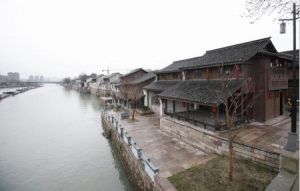Beijing-Hangzhou Grand Canal
The Beijing-Hangzhou Grand Canal (京杭大运河) has served as a major south-north transport artery since it was completed in the 13th century during the Yuan Dynasty (1271-1368). The oldest parts of the canal date back to the 5th century BC, although the various sections were finally combined into one during the Sui Dynasty (581–618). The canal has experienced numerous expansions and restorations throughout the history. The 1,794-km canal linking five major rivers, namely, Haihe, Yellow, Huaihe, Yangtze, and Qiantangjiang, is the longest and oldest artificial river in the world. Starting at Beijing, it passes through Tianjin and the provinces of Hebei, Shandong, Jiangsu and Zhejiang to the city of Hangzhou.
Now, its course is divided into seven sections. From north to south, these are the Tonghui River, the North Canal, the South Canal, the Lu Canal, the Zhong Canal, the Li Canal, and the Jiangnan Canal. The canal is now navigable between Hangzhou in Zhejiang Province and Jining in Shandong Province. Because of inadequate water and a narrow course, most of the canal's northern section (from Beijing to Jining) is inaccessible to boats. More than 100,000 vessels use the canal and carry 260 million tons of goods every year, three times as much as the Beijing-Shanghai Railway. The canal connects major coal bases in the north and serves as a cheap and convenient channel to transport coal to the fast developing Yangtze River Delta.
